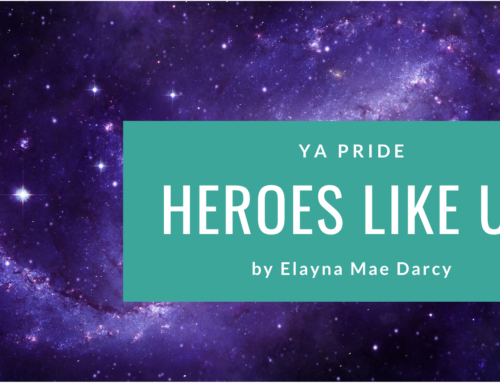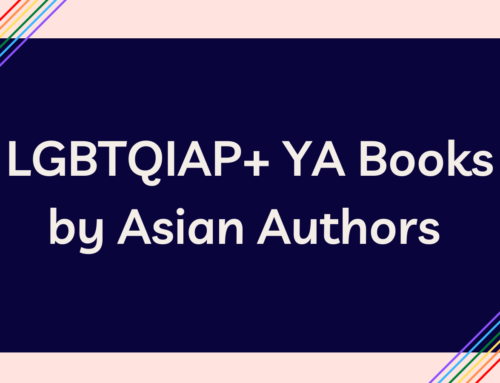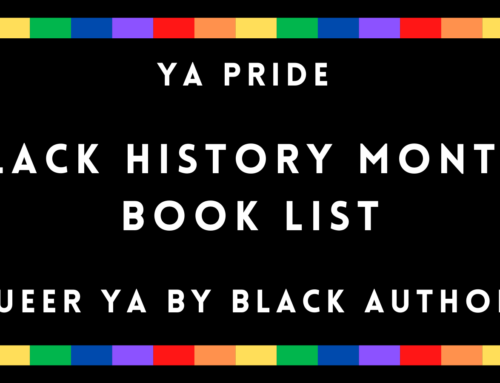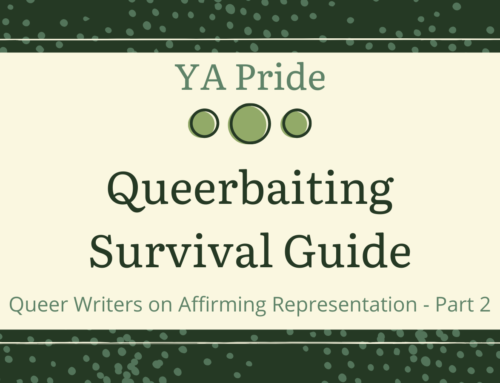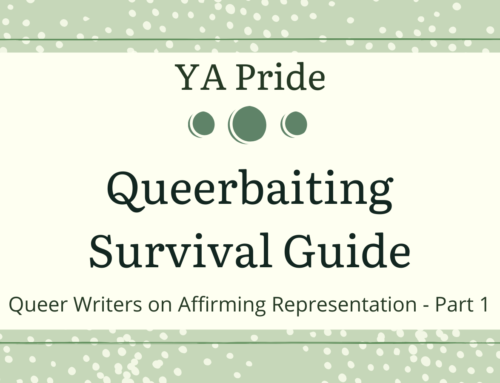by Dahlia Adler
I’ve spoken a lot about how Under the Lights wasn’t originally a f/f romance. I had always planned to write one, but my very first was going to be the YA I’m actually drafting now, which is a contemporary inspired by the historical War of the Roses. (It’s still f/f – not to worry!) But when I was drafting UtL, I really, really struggled with the romance I was writing for Vanessa with this boy, and why there was zero story and zero chemistry. I was talking to one of my critique partners about it, and I said in frustration, “I feel like I just want to make her a lesbian,” and it was like being struck with a lightning bolt. Further confirmation? I went back through the words I’d written to see just how much of her POV I’d have to strip out in order to do this, and saw that the only person with whom she had any chemistry was a waitress with whom she’d inexplicably flirted to no end. So that waitress became Brianna in disguise, and voila.
Technically, you could say this was the very first “choice” I made with regard to Under the Lights as LGBTQ YA, but the truth is, it didn’t feel like one; I don’t think I could’ve finished the book if I’d ignored her voice telling me, “There is a reason I am impressed by this waitress and so very not impressed by this dude you’re trying to make me like.” But other things…those are choices. And when you write LGBTQ YA, there are some very specific ones you have to make. For me, some of them were easy, some of them were influenced by outside information, and some of them changed along the way, but none of them were made casually.
1. How your character is going to self-ID, if at all – this was one of the harder ones for me. On the one hand, I didn’t want to push Van into a box too quickly. There’s a scene where she contemplates (out loud to Bri) whether maybe she’s bisexual, but by the time I finished the book, I just knew that she wasn’t, that for her, it was kind of a desperate grasp (especially in context) to have an area in which she could maybe “pass” in a way she obviously can’t with her race. However, originally, I wasn’t sure I was going to have her state it at all; in a sense, I wanted to buy her more time to grow comfortable. But, while I was still in the decision-making process of this, Ellen Page came out, and it inspired my (author of the superb f/f Black Iris) friend Leah Raeder to write this incredible blog post, and I saw what a difference it made to have a celebrity stand up and actually say the words. So, even though obviously Van’s not anyone’s celeb role model in real life, I wanted her to be someone who could potentially have that kind of influence on someone in her world.

Under the Lights by Dahlia Adler (Spencer Hill Contemporary, 2015)
2. How your love interest is going to self-ID, if at all – this one was actually much easier. In the aforementioned scene where Van flirts with a waitress, the waitress refers to her “ex-boyfriend.” When that waitress turned into Brianna, I knew that line was meant to be kept intact; she was bisexual from the second of her inception. The fact that it’s stated plainly was also always my intent, but after hearing my friend Tess Sharpe (author of the fabulous Far From You) say she’d heard many times how important it was to readers that she used the word “bisexual” in her book, I really went through and probably hit readers over the head with it. OH WELL.
3. If you have a bisexual character, are you going to acknowledge relevant topics like biphobia or bi erasure? – When Bri and Van have their real Big Talk, Bri shares something with her that’s implicitly about having her bisexuality erased, although it’s not the focus of what she’s talking about, and originally I didn’t place emphasis on that at all. Then I saw a lot of bi erasure in action, and it inspired me to make that bit way more explicit. So it’s only a few lines (albeit important ones!), and it was one of my very last edits, but it’s there. (For a book that is waaaay heavier on talk against biphobia/bi erasure, I could not more highly recommend Hannah Moskowitz’s Not Otherwise Specified.)
4. To HEA or not to HEA – No. Freaking. Brainer. There is a frustratingly tremendous amount of Tragic LGBTQ YA, especially on the f/f front. The girl isn’t gay after all! One of them is killed! Bullying tears them apart forever! Even if you do get a girl at the end, you’ll be destroyed by a different one first! I mean, don’t get me wrong, these books are still good and realistic and important, but I tried to imagine growing up as a queer teen and my f/f selection being what it is right now and it broke my heart. (Dating Sarah Cooper by Siera Maley does an excellent riff on this throughout. It also has a delightful HEA, FYI.) What kind of message does it send to queer teen girls that brutal heartbreak is literally inevitable? Which isn’t to gloss over the challenges ofbeing a queer teen girl – like I said, of course there’s realism there – but like, I would’ve thought it was hopeless. So, UtL was always going to be a super fluffy HEA, exactly as the cover would suggest.
5. S-E-X – This is the decision every YA romance author has to make, and it’s one I make for every single one of my books. (Spoiler: I always choose Yes.) With Under the Lights in particular, though, I was extremely determined to really, really show it. There’s something damagingly heteronormative in the portrayal of sex in YA right now, this idea that nothing “counts” but a penis in a vagina, and WTF does that say to people who are not interested in having sex with those parts? Especially between girls, for whom sex is often something considered foreplay by hetero couples, it seems to invalidate the idea that a queer girl can have a real first time. I am still floored by how little on-page sex there is between two girls in YA; the aforementioned Far From You and Sarah McCarry’s upcoming About a Girl have by far the most I’ve read outside of UtL, and both are wonderfully written but pretty brief. And of course that can be author choice or editor choice or publisher choice – I have no idea – but my choice was to go all out with a girl-girl sex scene and brace myself for a fight with my editor. That fight never came. Instead I was told, “We didn’t change any of it, and feel free to add more kissing throughout. Consider anything you want to add on that front pre-approved.” So, that was pretty damn cool, and I went ahead and added as much as I could. Whether or not I succeeded, I definitely aimed for an experience that was a true “first time,” right down to a certain parallel with the first book, which I won’t spoil.
Queer girls deserve a book to keep under the mattress as much as straight girls do, and that is first and foremost what I wanted this book to be. So if you hate 99% of the book but you want to reread that first kiss or sex scene over and over? I consider it a success.

